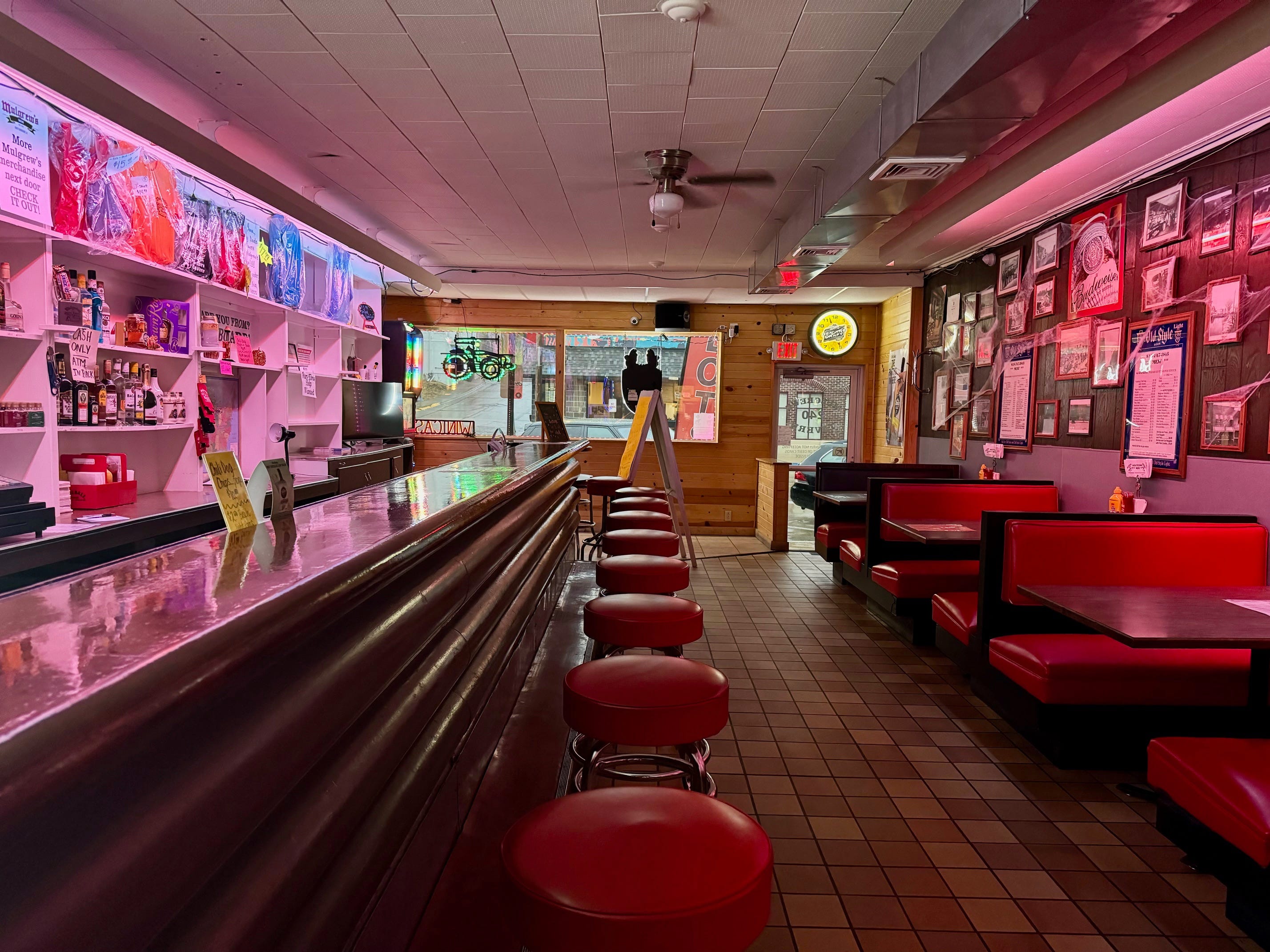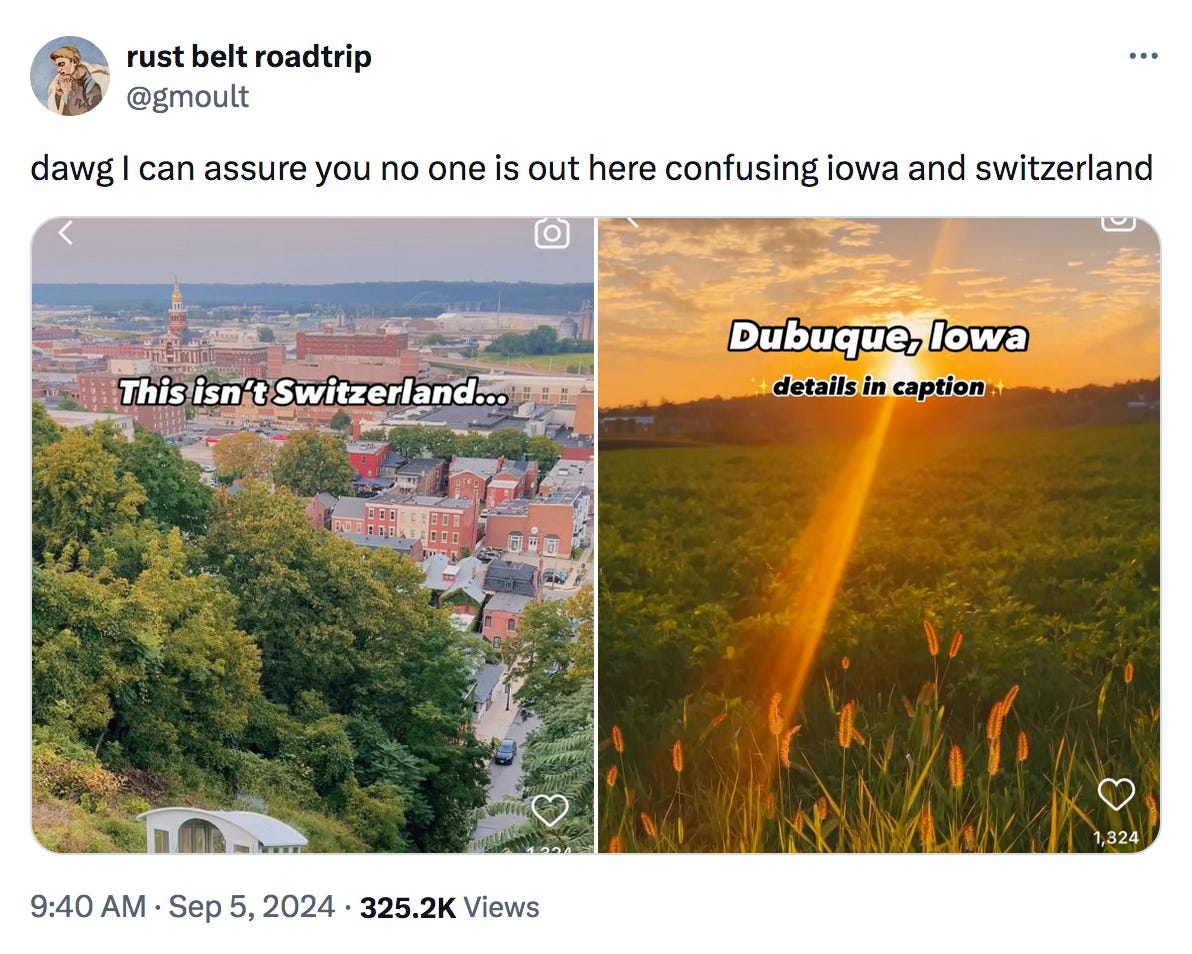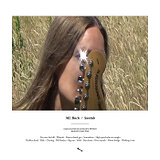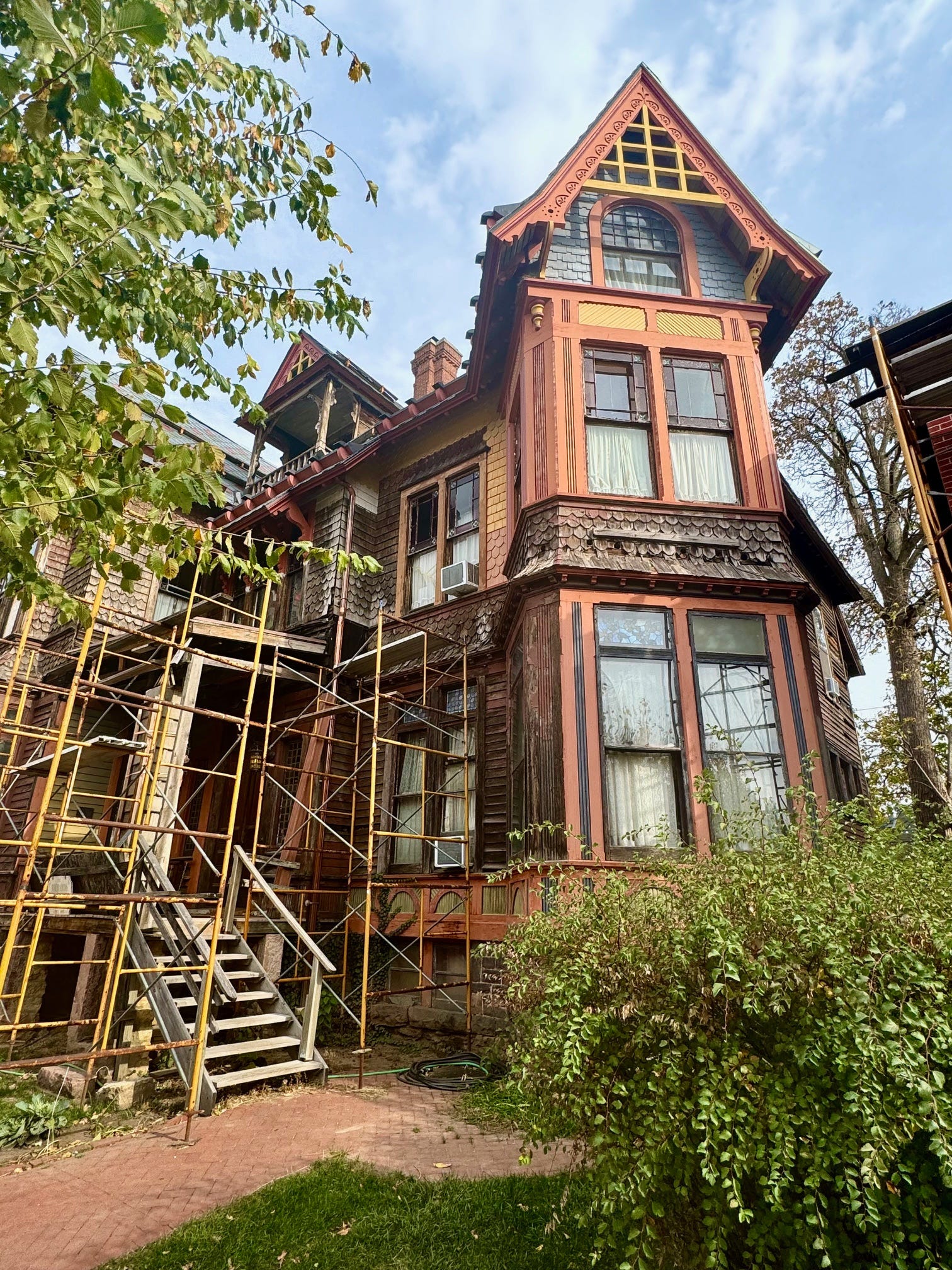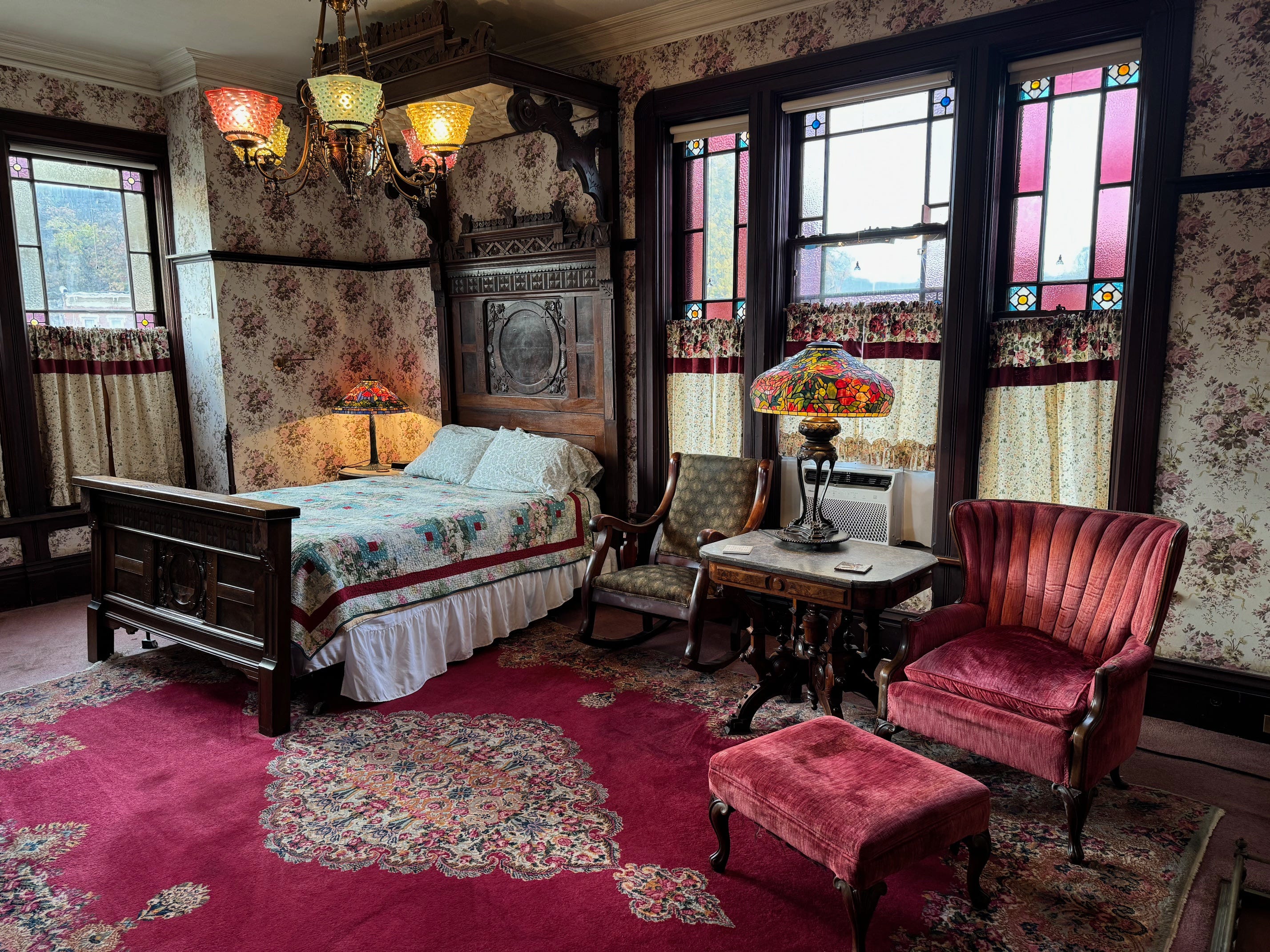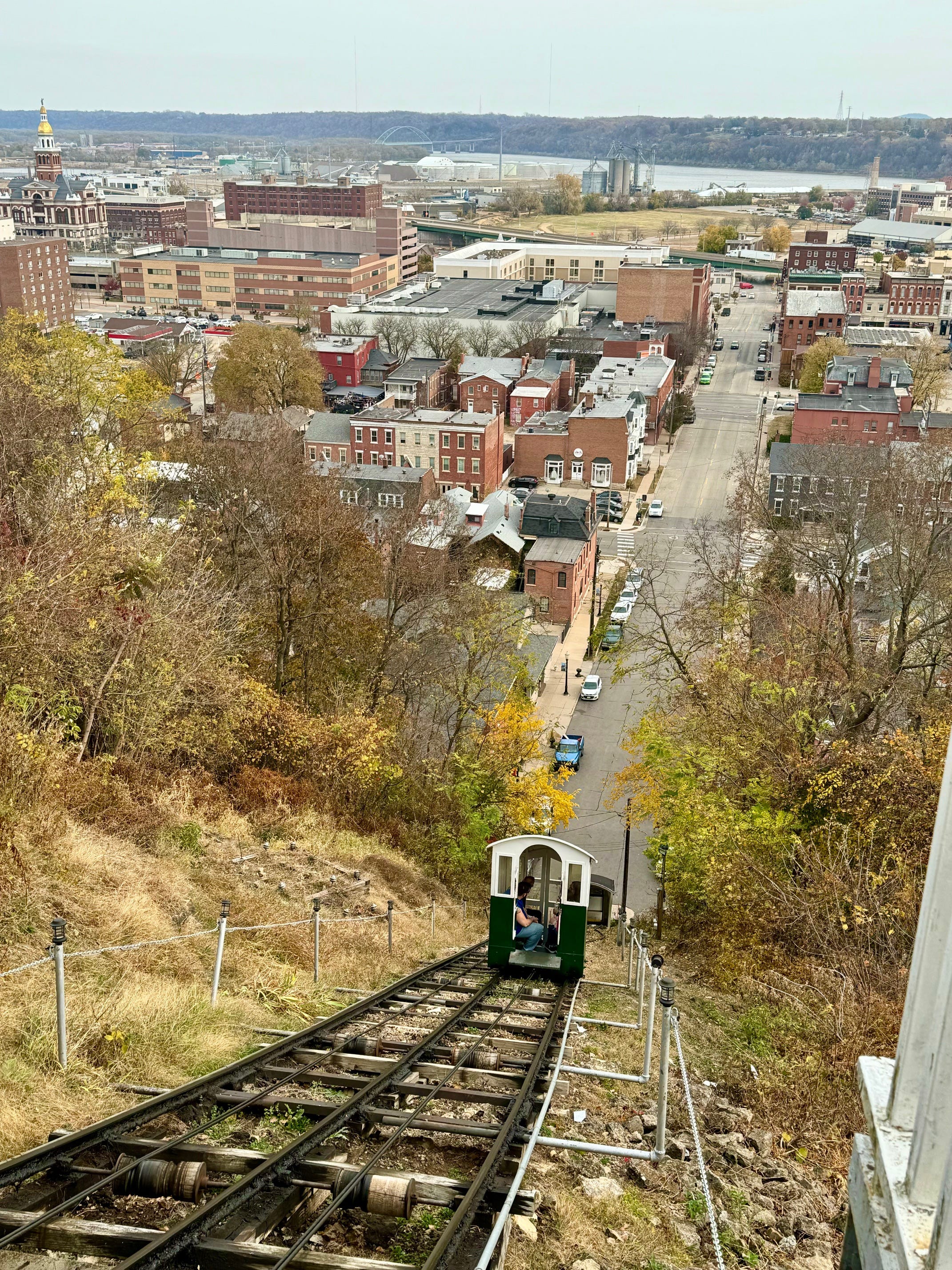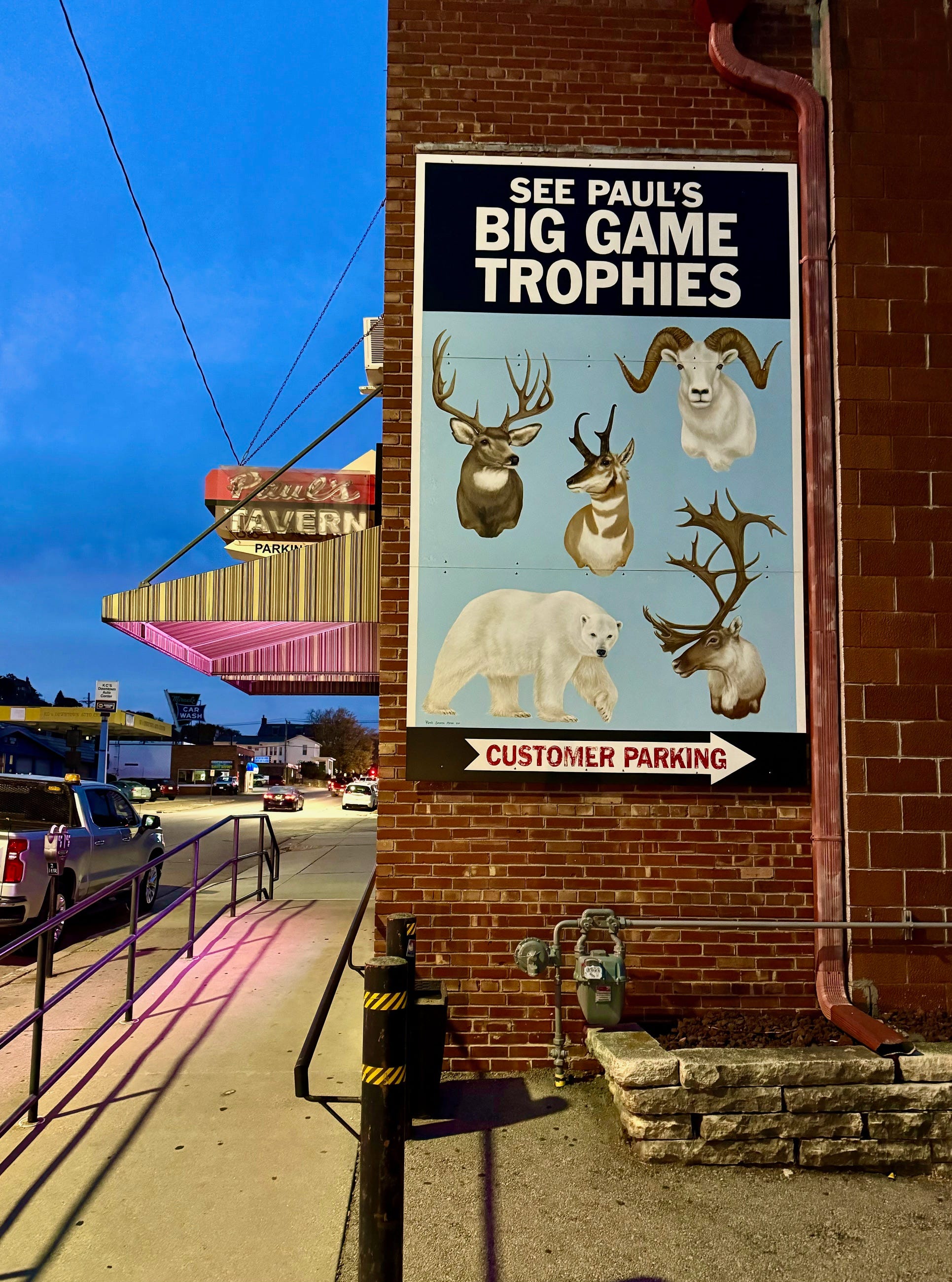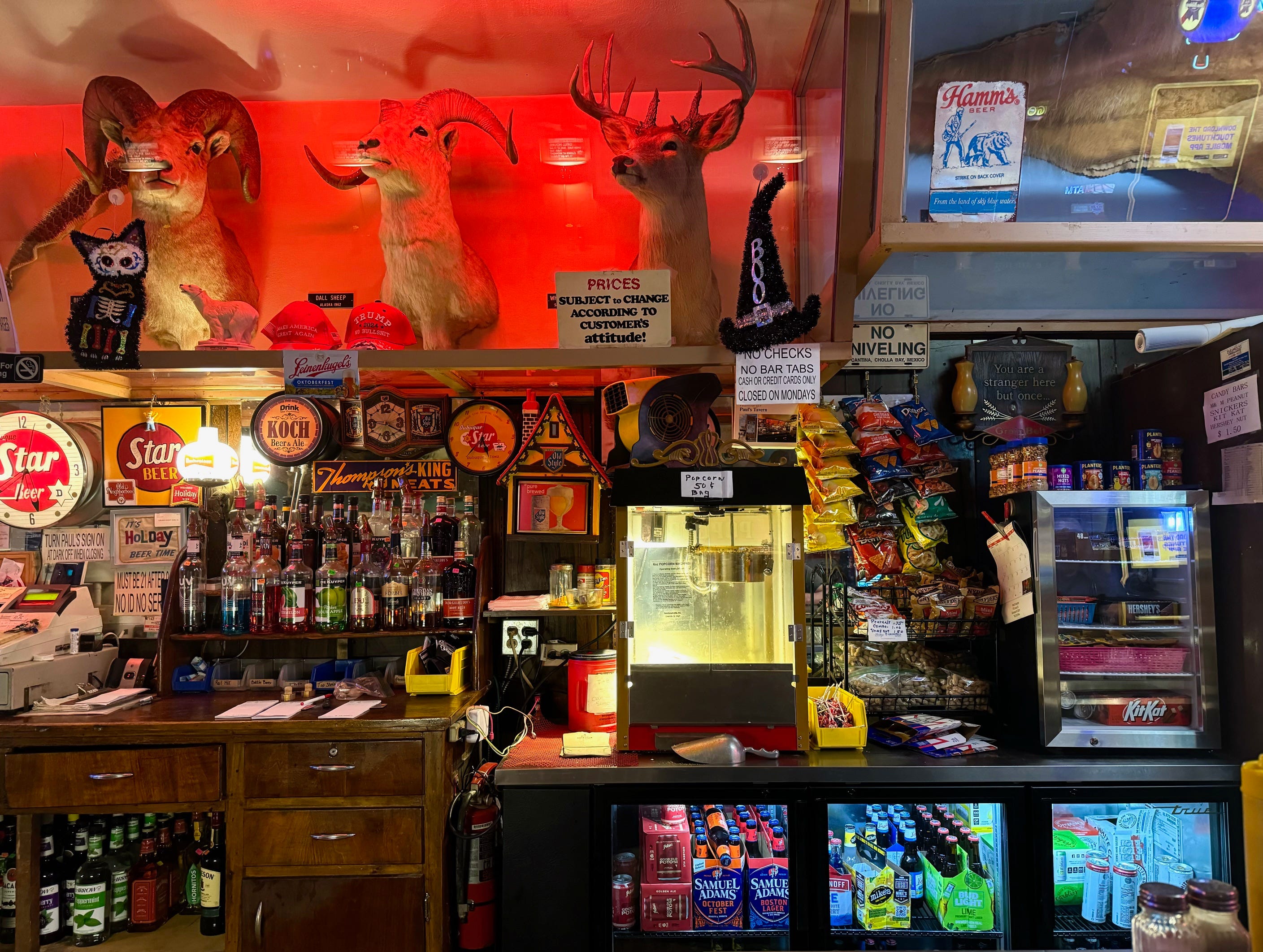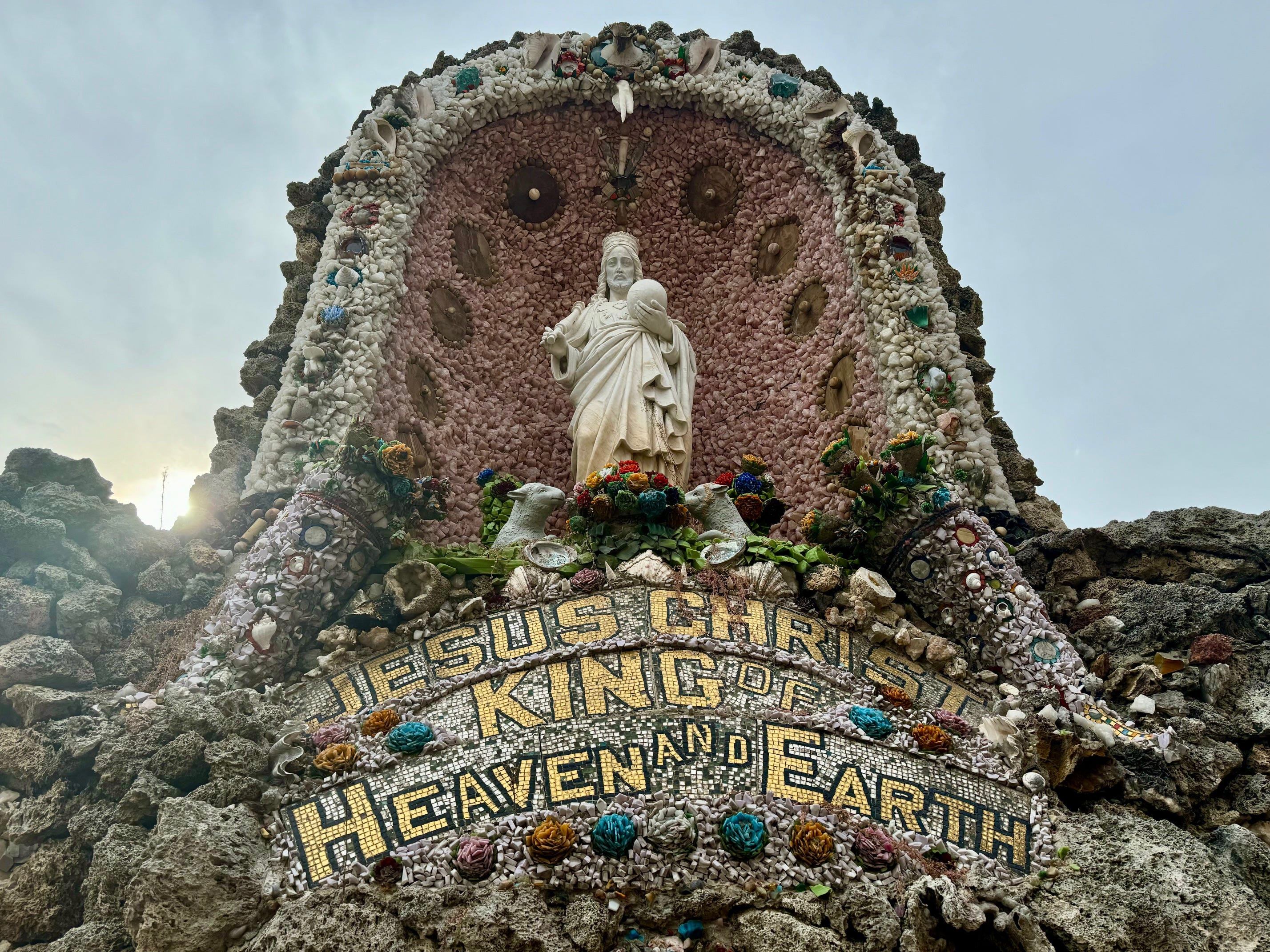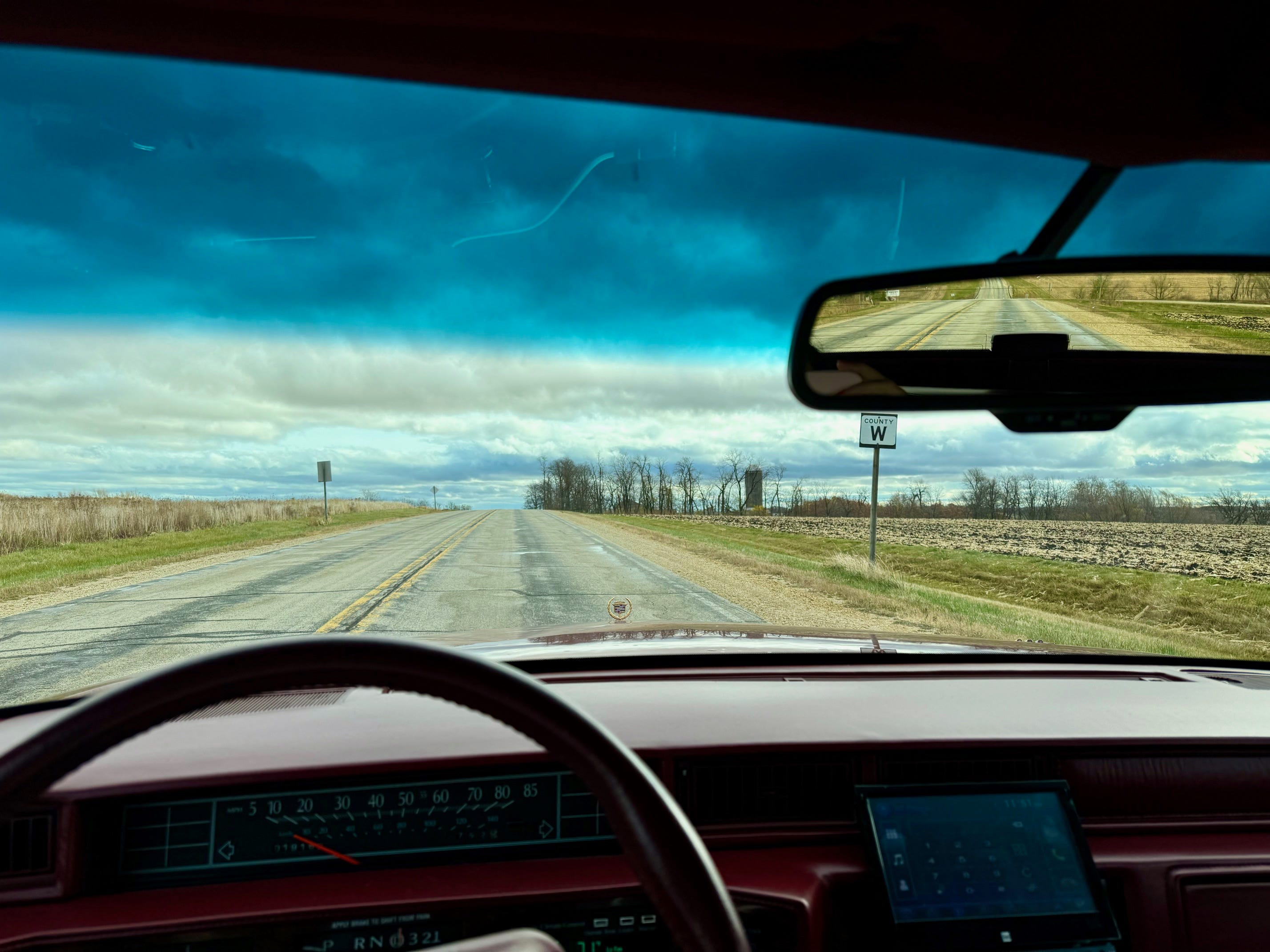“THIS ISN’T SWITZERLAND...” read the caption over a photo of a quaint-looking town seen from atop a hillside cable car. Next, a golden sunset over a field of fountain grass: “DUBUQUE, IOWA (DETAILS IN CAPTION).” “Dawg I can assure you no one is out here confusing iowa and switzerland,” said a post on my “For You” page. (Say what you will about “X.com” but I enjoy its little tricks, serving me up non-stop photos of highways and gas stations taken by soulful vagabonds with 200 followers or less.) But anyway, I wouldn’t be so sure. “No one would confuse the wretched Switzerland with the beautiful and elegant dubuque,” replied the Illinois Enjoyer, who’s currently 247/1299 on his mission to visit every town, village, and city in Illinois. I’d only just returned from a fascinating visit throughout the haunted river towns of southern Illinois, and my attention was piqued. It was time for America’s #1 vibes-based email newsletter to cross the Mississippi and see what Dubuque had in store. They want you to believe the Midwest is flat. Not so. Those who’ve had the sublime pleasure of driving through the Driftless region know otherwise. The Driftless — a quite mystical name for the area (mostly Southwestern Wisconsin and Northeastern Iowa) left unglaciated during the last Ice Age, a name suggesting wild and windswept mystery. Forget everything you know about the so-called endless cornfields as far as the eye can see; here in the Driftless are rolling hills, steep limestone cliffs, deep woods of oak and ash, networks of caves, coldwater springs. I find it hard to picture a more perfect time than RIGHT NOW to wind down Highway 20, with the last yellow leaves falling and the autumn sunlight catching in streams like silver ribbons or pools of mercury, here and there a stoic cow or lonesome-looking horse. What was left of the summer’s corn rippled as the clouds raced through the sky, giving the sense of being in a time-lapse of my own life. And the only thing to listen to, climbing these hills and falling into green and gold and gray, was Suntub by ML Buch, the best album of the 2020s, released this time last year.
And the oaks are bright This is music for October and November, for cold days with white skies with the sun still flashing through, for driving through the Driftless with the fields all harvested. Suntub triggers the scent of cedar and eucalyptus, like a perfume I ran out of that advertised itself like so: “If you’ve been flung / Into the garden of green / By a volley of cannon fire / Watch for the soft shimmering rain / From a comfortable seat / In a strange place.” And it reminds me of the work of Alex Colville, whose midcentury renderings of cows, rivers and dogs could be PlayStation screenshots from 1995. The images Buch channels are stranger, more folkloric — body horror refracted through the warm, windswept sublime. From her car parked near the sea in the Danish countryside, she sings of flesh rags, buckets of ancestral drool, gurgling nerves, “a crow’s cherry eye.” The color scheme is golden-green with streaks of burning red. “It’s about the need for calm, peace... and the need for intensity. And euphoria, and fire,” she said slowly in an interview last year. “And then it’s about feeling solid or assembled, and then falling apart. Or dissolving into light, or goo.” I’ve said it before and I’ll say it again: there are places where the veil is thin, if you catch my drift, and many of them exist along the Mississippi. There’s something quite uncanny about these old river towns, once bustling ports of industry, now mostly gone to ruin. But the view crossing the bridge over the river into Iowa was as quaintly all-American as I could’ve imagined, with rows of old Victorian manors perched along the bluffs framing a small downtown pierced here and there by church steeples or clock towers. It looked to be a place full of just the kinds of bed-and-breakfasts where I like to stay: 150 years old and in all likelihood haunted, with wildly lavish rooms to rent for $80 a night. The one I chose looked terrifying on the outside, exactly the place a kid expects a witch to live in, but inside the house were 90 stained glass windows, eight ornate fireplaces, and chandeliers original from 1883, plus homemade coffee cake and breakfast at 8 sharp. A short walk down Locust was the Fourth Street Elevator — the world’s shortest, steepest scenic railway, built in 1882 by a rich local who tired of the half-hour buggy ride to his house atop the bluffs. From the summit of the 296-foot-long cable car, now $2 a ride, are the panoramic views previously called “Switzerland-esque,” and though I’ve never been, I’ll put Dubuque up there with Zurich if you catch it on a day when the leaves are yellow and the wind smells like a fire and “High speed calm air tonight” is playing in your headphones. At the bottom of the hill, I wandered for a while, using my heart’s special compass that locates me the finest dive bar in any given place I find myself to be. “SEE PAUL’S BIG GAME TROPHIES,” said a sign outside a tavern whose pink neon lights flashed “PAUL’S.” Well, say no more! I took the last remaining stool at the long and crowded bar, where ruddy men of all ages, dressed in all manner of construction gear or camouflage attire, were shouting to each other over the sounds of Marty Robbins: To the town of Agua Fria rode a stranger one fine day, The song fit the scene exactly, as peering from above the bar were several dozen hunting trophies from the ‘50s through the ‘70s — the proud heads of elk and mountain goats, bobcats preserved mid-screech, a ragged polar bear pelt the size of a pool table. If only these men knew that a real Gunfighter Ballads and Trail Songs appreciator had entered the arena! I thought, taking a sip of PBR. “Marty Robbins? What a song,” I nudged the fellow to my left, adding mustard to his burger freshly griddled behind the bar. (At $4 a burger, it’s the greatest deal in town.) “Mm,” he nodded, turning his attentions to the TV. I lingered for an hour, during which “Big Iron” would be played a grand total of three times, but somehow no one wanted to talk gunfighter ballads, or at all. In moments such as this, I’m chilled by the idea that any day I’ll reach the age at which I no longer disarm strangers with my womanly charms — admittedly a death blow to my journalistic beat — but instead I ate a cheeseburger and sent myself to bed. 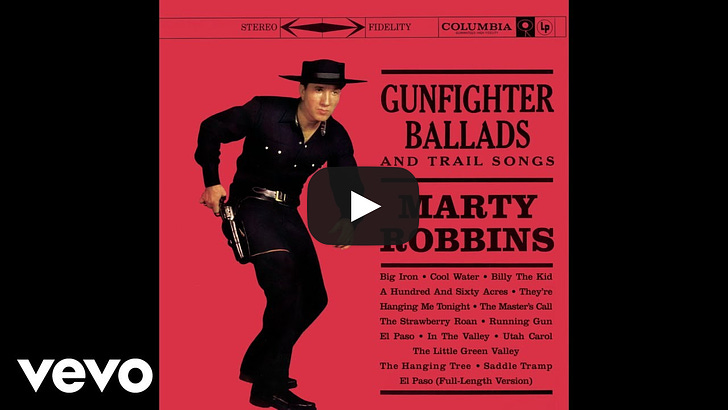 Across the Mississippi by bridge is East Dubuque, IL (pop. 1,479), whose reputation in the 19th century, and most of the 20th, was of vice: drinking, fighting, gambling and other such depravity. From Prohibition through the ‘90s, Sinsinawa Street was home to speakeasies, brothels, and gambling parlors open til sunrise. Today the last remaining landmark of East Dubuque’s “Sin City” era is Mulgrew’s Tavern & Liquor Store, the oldest business in town — established 1921, with a chili recipe that dates back to the early 1960s. (They also hold the unofficial record for the second-longest bar in Illinois.) I’d spent the morning across the Wisconsin border at one of the Midwest’s more famous works of religious folk art: the Dickeyville Grotto, a shrine built by a local Catholic priest between 1925 and 1930, dedicated to the ideals of love of God and love of country. Father Matthias Wernerus used locally found objects — broken glass, seashells, the tops of perfume bottles, agate, quartz, amethyst, petrified wood and moss — and died in 1931, just after its completion. Did you know that the Midwest is home to more Catholic grottos than anywhere else in the world? They reflect the “grotto trend” of the 1920s and ‘30s, built as roadside attractions along burgeoning highways by self-taught Catholic artists without blueprints or plans. You could plan a full-on road trip touring these folk-art shrines, and perhaps one day I will. But for now, there was a foot-long chili cheese dog calling my name. Rain was pouring as I ducked inside of Mulgrew’s, where the news was blasting Biden calling Trump’s supporters “garbage” and the only other patrons were ensorcelled by babbling video slot machines. I ordered a High Life and their famous chili cheese dog, which I reckon goes down smoother much later in the night. (Their hours are 7 a.m. to 3:30 a.m.) “Why don’t we turn off this political crap?” the blonde bartender suggested, and proceeded to regale me of her recent Temu haul. The rain refused to let up, and we amused ourselves with shots of Dr. McGillicudy’s Mentholmint Liqueur until a soggy man arrived and pulled up a stool beside me. The bartender knew him well: “Steve always shows up right around the time I get divorced,” she said. “Then I tried to date a woman, but he came to her apartment and we fucked in her spare bedroom.” Steve shrugged. “I know what you are,” I told him. “You’re a chaos agent!” “I bet Steve can’t even spell ‘chaos’!” the bartender howled. “K-A…” Steve started, and we raised another shot. “Only madness lies down this road,” I whispered to the bartender as the three of us got drunker and the rainstorm carried on. “I know that’s right,” she said. RELATED POSTS YOU MIGHT ENJOY…You're currently a free subscriber to SCARY COOL SAD GOODBYE. For the full experience, upgrade your subscription. |
